Picture this: your living room transformed into a magical autumn wonderland, not by expensive decorators, but by little hands covered in cinnamon-scented paint and eyes sparkling with creative joy. Fall crafting with children isn’t just about keeping them busy on crisp October afternoons – it’s about creating heirloom-quality home décor that tells the story of your family’s autumn adventures. These aren’t your typical construction paper cutouts destined for the recycling bin.
Instead, imagine floating candle gardens that rival high-end restaurant ambiance, living moss typography that purifies your air while spelling out love, and luminous leaf panels that cast dancing shadows across your walls. Each project bridges the gap between childhood wonder and sophisticated design, proving that the most beautiful home décor comes with fingerprints, giggles, and memories baked right in.
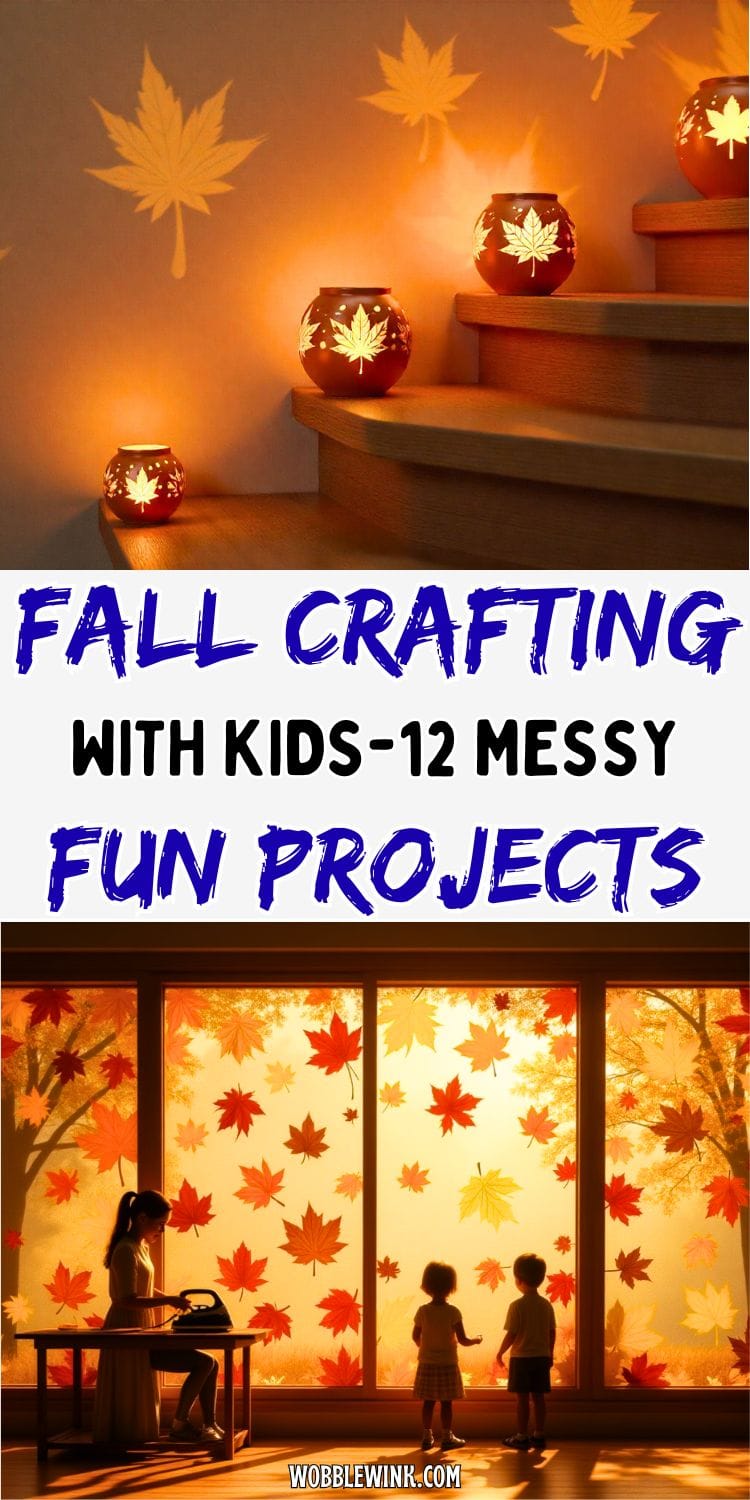
1. Autumn Leaf Luminaries with Clay Impressions
What if your fall decorations could literally glow with the memory of a perfect autumn day? This project transforms collected leaves into stunning architectural lighting fixtures that become permanent installations in your home. Children press fresh leaves into air-dry clay to create textured panels, which are then assembled into geometric lantern forms. The genius lies in how the leaf impressions create natural light patterns that dance across walls when illuminated from within.
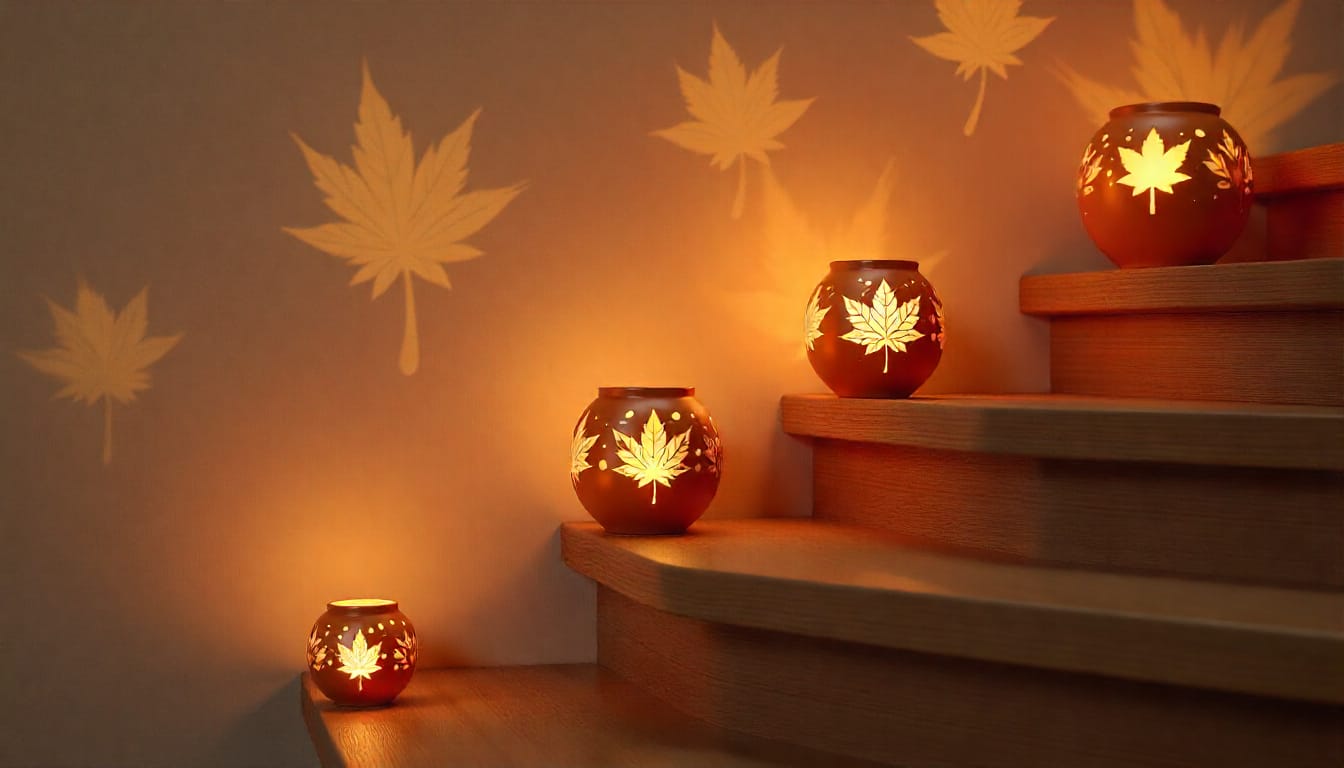
The magic happens during the “firing” process – using a hair dryer to accelerate clay drying while leaves are still embedded creates the most intricate textures. Position these luminaries at varying heights along staircases or cluster them as a centerpiece to create layered ambient lighting that interior designers charge thousands to achieve.
2. Sensory Spice Paint Murals
Forget traditional finger painting – this revolutionary approach combines aromatherapy with art creation, turning any wall into an immersive sensory experience. By mixing powdered spices like cinnamon, turmeric, and paprika with cornstarch-based paint, children create textured murals that smell incredible for months. The secret ingredient? Adding a touch of glycerin makes the spice particles adhere better while maintaining their aromatic properties.

Here’s the design breakthrough: these aren’t just temporary art pieces. When properly sealed with matte varnish, spice paintings become permanent accent walls that release gentle fragrance when touched. Install them in reading nooks or bedrooms where the calming scents of autumn spices promote relaxation and better sleep – a principle borrowed from high-end spa design.
3. Living Moss Typography Display
Transform your child’s name or favorite words into living art installations that evolve throughout the season. This project uses the ancient Japanese art of kokedama (moss balls) reimagined for modern typography. Children shape chicken wire into letter forms, fill them with moisture-retaining soil, and cover entirely with preserved moss. The result? Three-dimensional letters that maintain their lush green appearance for months with minimal care.

The sophisticated twist lies in the mounting system: using floating shelf brackets creates the illusion that these moss letters are suspended in mid-air. Arrange them across a feature wall in a child’s room or along a hallway to create a stunning biophilic design element that improves air quality while making a bold decorative statement.
4. Edible Autumn Landscape Dioramas
Why settle for looking at fall scenery when you can create – and eventually eat – your own miniature autumn world? This project uses graham crackers as building foundations, cream cheese “snow” peaks, pretzel stick trees, and crushed cereal leaves to build elaborate landscape dioramas in clear glass containers. The unexpected element? Each diorama tells a story through tiny figurines positioned throughout the edible terrain.
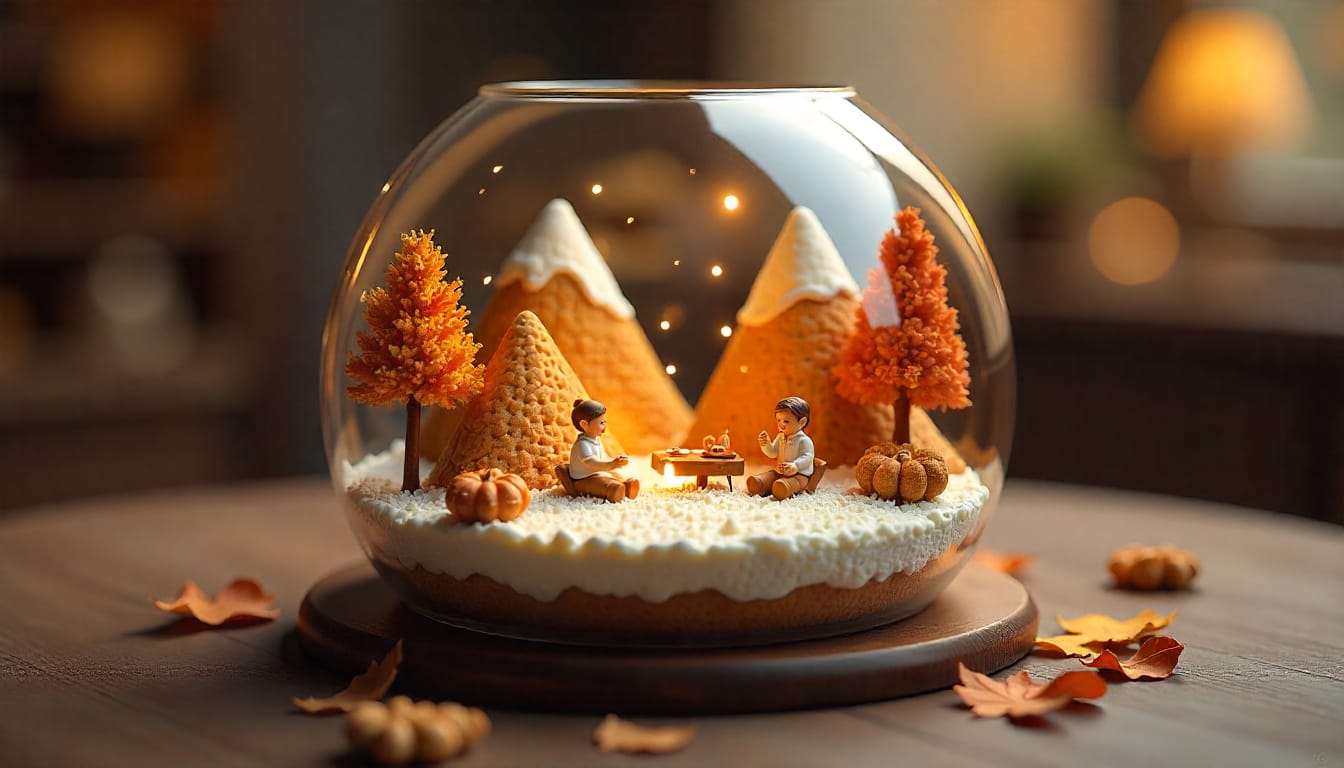
The interior design application is brilliant: these dioramas become rotating seasonal centerpieces that engage dinner guests in storytelling. Create multiple scenes representing different autumn activities, then swap them weekly. The transparent containers can be backlit with battery-operated LED strips to create enchanting nighttime displays that rival expensive art installations.
5. Woven Twig Architectural Panels
Discover how traditional basket weaving techniques can create stunning room dividers that grow more beautiful as they age. Children gather flexible twigs and branches, then weave them through a simple wooden frame to create panels that function as both art and architecture. The secret is in the wood selection – using branches with different bark textures creates natural color variations that rival expensive designer wallpapers.
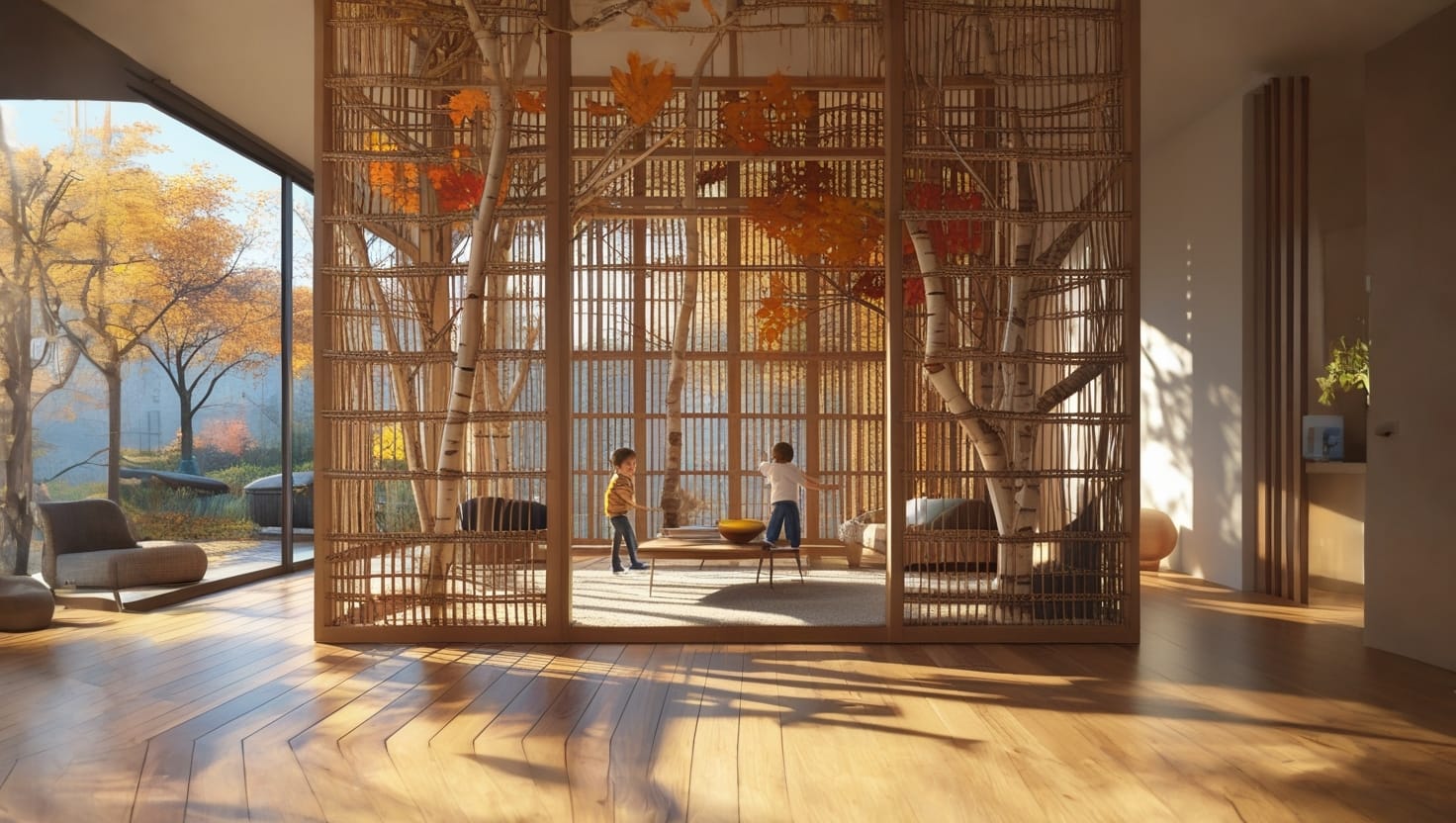
These panels excel as space definers in open-concept homes, creating cozy reading corners or play zones without permanent construction. As the wood dries and seasons, it naturally tightens and develops rich patina colors. Position them near windows where afternoon light filters through the woven pattern, casting intricate shadows that change throughout the day.
6. Floating Acorn Cap Candle Gardens
Transform discarded acorn caps into an enchanting flotilla of miniature candles that create the most romantic autumn ambiance imaginable. This project involves melting beeswax into cleaned acorn caps with tiny cotton string wicks, then floating dozens of them in shallow glass bowls filled with water and floating autumn leaves. The visual impact is mesmerizing – like discovering a fairy village lit up at twilight.
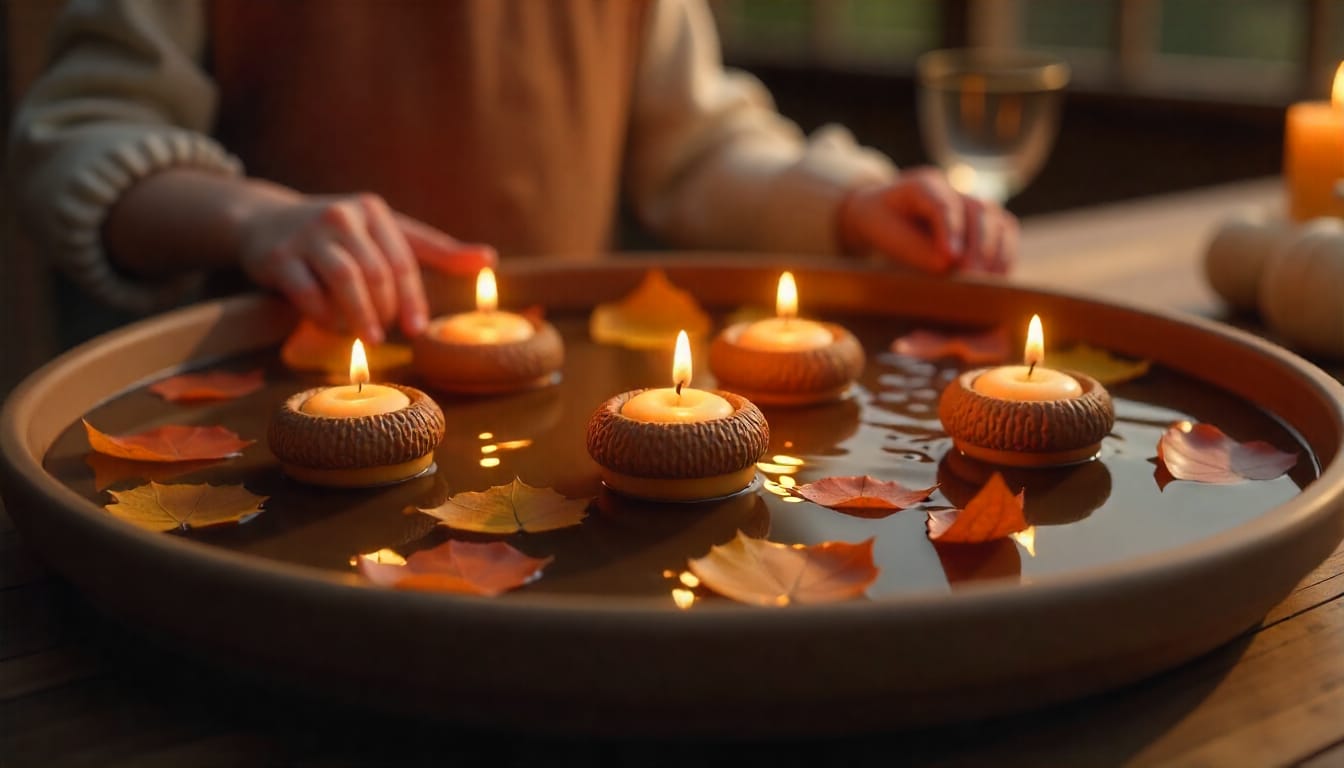
The design sophistication emerges when you realize these floating candle gardens can be scaled from intimate tabletop displays to dramatic floor installations using large ceramic vessels. The key is varying the water depths and candle heights to create visual interest. Professional event designers use similar techniques for weddings, charging premium prices for this exact magical ambiance.
7. Preserved Leaf Stained Glass Tapestries
Unlock the secret to creating stunning window treatments using nothing more than leaves, wax paper, and iron. Children arrange colorful autumn leaves between sheets of wax paper, then iron them to create translucent panels that rival expensive stained glass windows. The breakthrough technique involves layering leaves of different thicknesses to control light transmission – thin leaves become bright highlights while thick veined leaves create dramatic shadows.
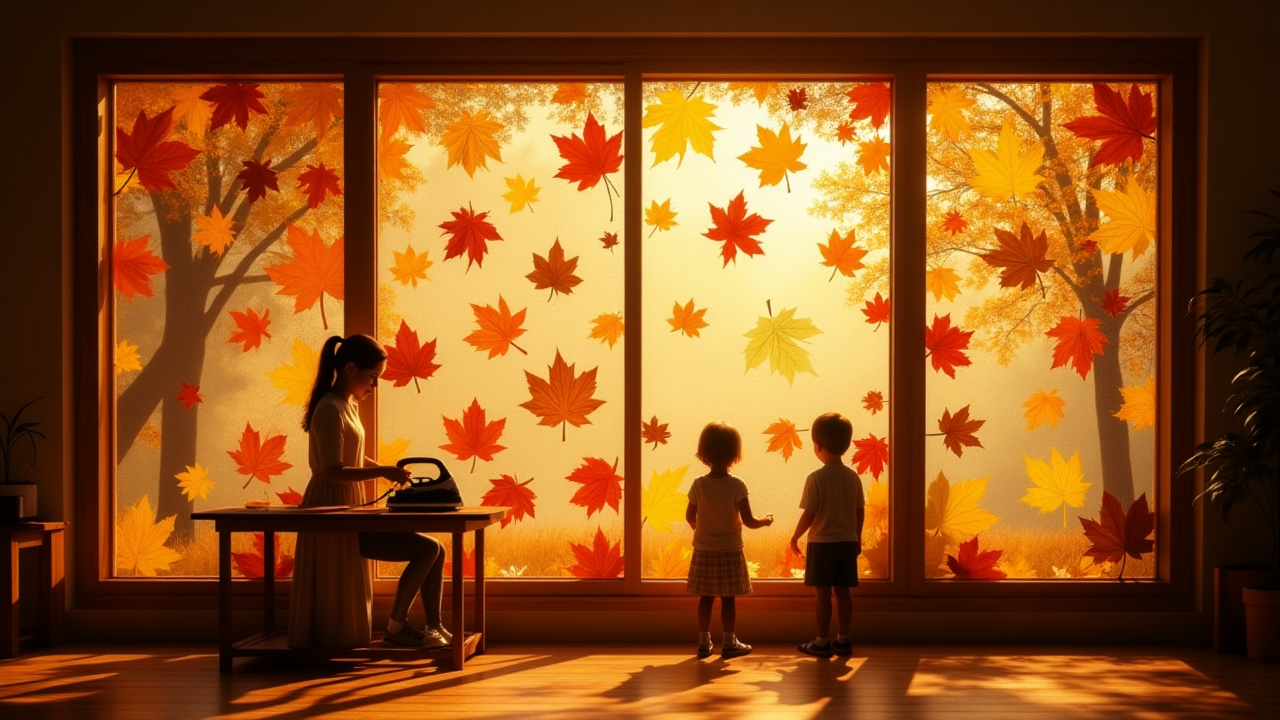
These leaf tapestries excel when hung in series across large windows, creating a cascade of natural color that changes with outdoor lighting conditions. The wax preservation means they maintain their colors for months, slowly fading into muted earth tones that remain beautiful. Interior designers often struggle to achieve this quality of natural color variation in expensive window treatments.
8. Scented Pine Cone Memory Towers
Engineer towering sculptures that engage multiple senses while teaching children about balance and structure. This project involves painting pine cones with scented tempera paint (mixed with essential oils), then stacking them into gravity-defying towers using hidden dowel connections. Each tower tells a story through color progression and scent combinations – perhaps starting with earthy base notes and ascending to bright citrus peaks.

The architectural genius lies in creating clusters of these towers at different heights throughout a room, establishing visual rhythm and flow. As air currents move through the space, different sections of the towers release their fragrances, creating an ever-changing aromatic landscape. This principle is borrowed from high-end retail environments where scent zoning influences customer behavior and emotional responses.
9. Interactive Texture Harvest Boards
Create tactile art installations that invite touch while preserving autumn’s diverse textures for year-round exploration. Children collect materials with contrasting textures – smooth river rocks, rough bark, soft moss, bumpy seed pods – then arrange them on wooden boards with removable sections. The innovation lies in the modular design: textures can be rearranged seasonally or replaced as new interesting materials are discovered.
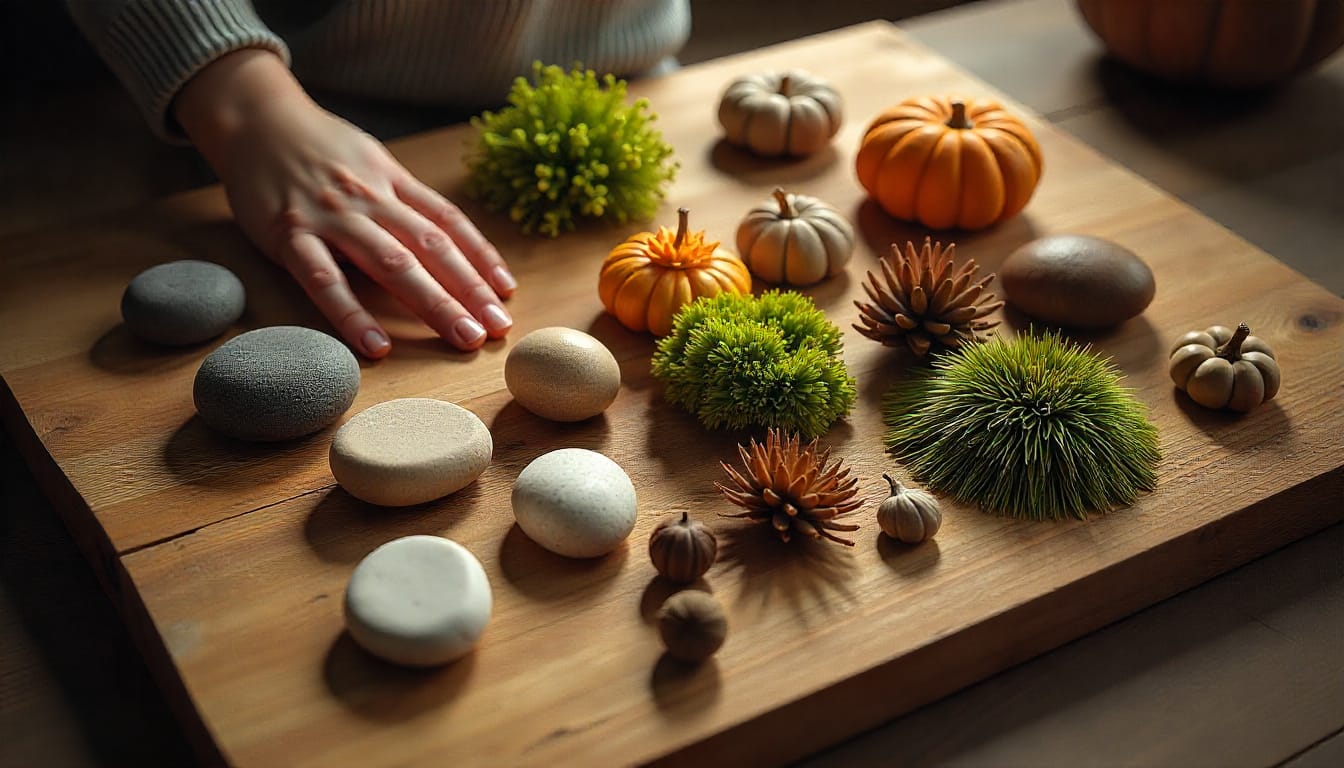
These boards function as both sensory tools and sophisticated wall art when properly mounted and lit. The key is in the composition – following principles of abstract art to create visual balance while maximizing tactile diversity. Position them at child height in hallways or playrooms where they become interactive art pieces that engage visitors and provide sensory regulation benefits.
10. Layered Sand Art Landscape Bottles
Discover how geological principles create stunning decorative bottles that tell the story of autumn’s changing landscape. Children layer different colored sands, small pebbles, dried flowers, and tiny treasures in clear bottles to create miniature ecosystem cross-sections. The secret technique involves using a thin dowel to create valleys and peaks in the sand layers, mimicking natural geological formations.

These bottles become sophisticated decorative elements when grouped by size and arranged with strategic lighting. The layered compositions create visual depth that draws the eye, while the natural materials add organic texture to modern interiors. Advanced versions include multiple bottles representing the same landscape through different seasons, creating a dynamic display that evolves over time.
11. Living Branch Chandelier Gardens
Suspend autumn magic overhead with chandeliers that blur the line between lighting fixture and living sculpture. This project uses strong fallen branches as the structural foundation, wrapped with battery-operated LED string lights and adorned with hanging glass terrariums containing air plants. The result is a stunning overhead installation that provides both illumination and natural beauty.
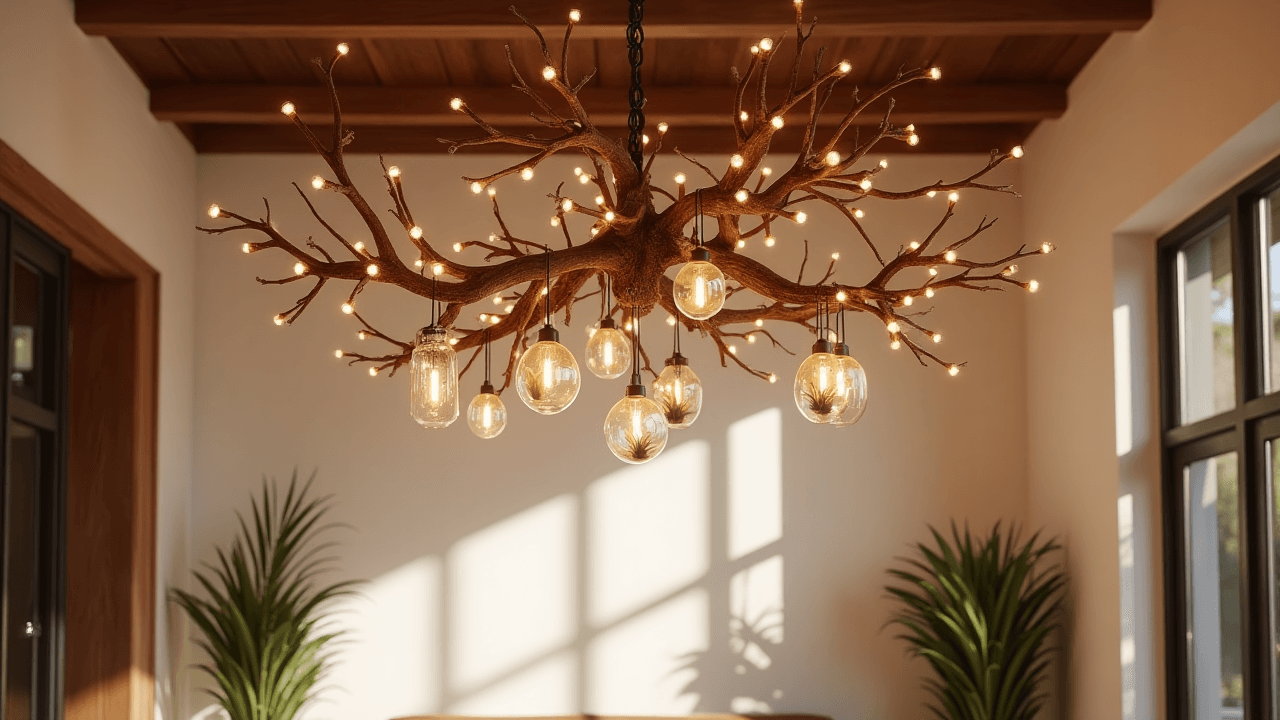
The design sophistication emerges in the scale and composition possibilities – from intimate bedroom installations to grand foyer statements. The key is in the branch selection and preparation: choosing pieces with interesting natural curves and properly treating them to prevent pest issues. These installations rival expensive designer lighting while providing the unique benefit of incorporating living elements that improve air quality.
12. Metamorphic Rock Paint Stones
End the crafting season with a project that transforms ordinary stones into sophisticated decorative elements through a multi-stage painting process that mimics geological formation. Children begin with base coats representing sedimentary layers, add pressure effects through textured rolling techniques, then finish with metallic highlights that simulate mineral veins. The final step involves a protective coating that makes the stones suitable for both indoor and outdoor use.
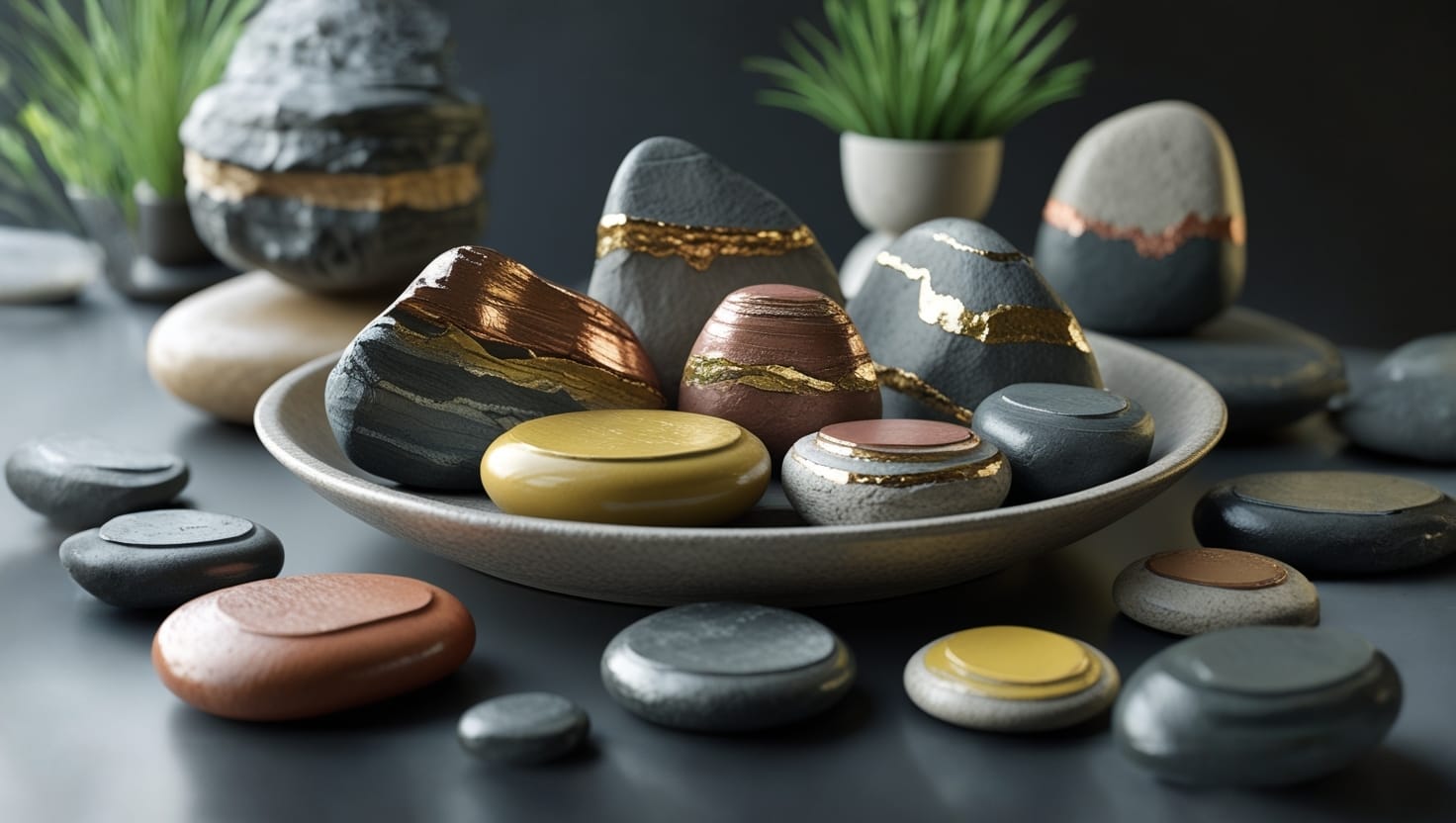
These painted stones excel as transitional decorative elements that bridge indoor and outdoor spaces. Arrange them in shallow bowls as coffee table centerpieces, line them along garden pathways, or use them as bookends that add natural beauty to shelving displays. The sophisticated color palettes and realistic textures rival expensive decorative objects while carrying the meaningful story of their creation process.
Final Thoughts;
These twelve fall crafting projects prove that the messiest moments often create the most meaningful memories. When children’s hands are covered in spice paint or carefully balancing pine cones into towering sculptures, they’re not just crafting – they’re learning that creativity has no boundaries. The beauty lies in how these projects evolve from chaotic beginnings into sophisticated home décor that tells the story of your family’s autumn adventures.
Years from now, that floating acorn candle garden won’t just illuminate your table; it will illuminate memories of tiny fingers carefully threading wicks and excited giggles over flickering flames. The paint splatters will wash off, the glue will eventually fade, but the confidence built through creating something beautiful with their own hands becomes permanent.
These projects remind us that the most expensive interior design elements can’t compete with handmade treasures that carry love in every imperfect brushstroke. So embrace the mess, celebrate the chaos, and let your home become a gallery of autumn memories that grow more precious with each passing season.

